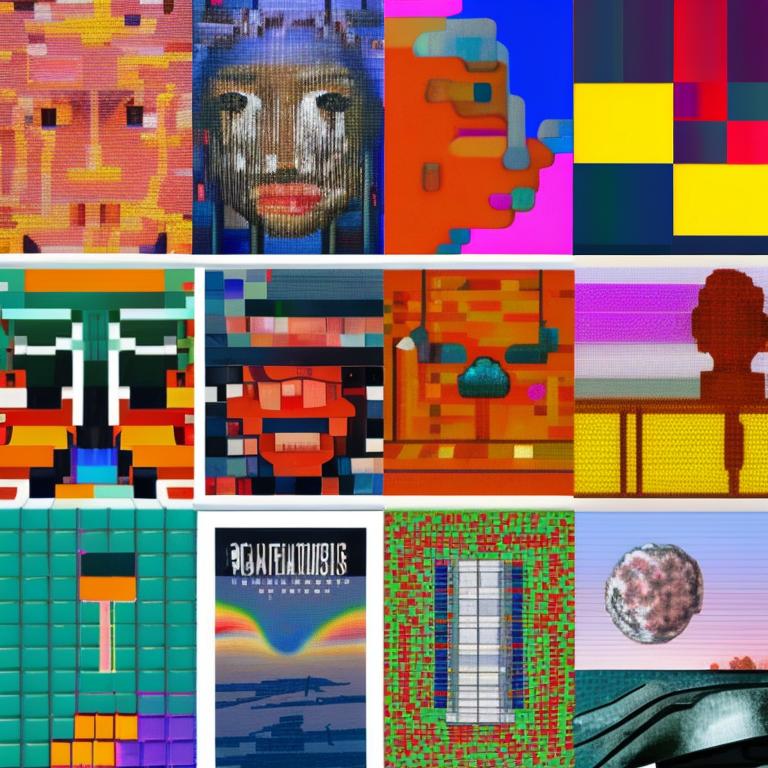The Impact of Art Museums: Preserving and Celebrating Creativity
Art museums serve as vital institutions in society, playing a crucial role in preserving and celebrating the world's artistic heritage. These cultural spaces provide a sanctuary for creativity, fostering an environment where art can be admired, studied, and appreciated by people from all walks of life. One of the primary functions of art museums is to preserve artworks for future generations. These institutions carefully curate collections, ensuring the proper storage, conservation, and restoration of priceless artworks. By employing specialized techniques and experts, art museums ensure that these cultural treasures are protected from degradation and can be enjoyed by future audiences. Moreover, art museums play a pivotal role in curating and organizing exhibitions that showcase a wide range of artistic styles, periods, and themes. These exhibitions not only educate and inform visitors but also provide a platform for artists to exhibit their works on a public stage. By showcasing diverse artistic practices, art museums foster dialogue and encourage exploration of different perspectives within the art world and society at large. Furthermore, art museums contribute to a sense of community and cultural identity. They often hold events, workshops, and lectures that engage with local communities, aiming to make art accessible to a broader audience. Through educational programs, museums inspire creativity and critical thinking in children and adults alike, nurturing the next generation of artists, art enthusiasts, and informed individuals. Art museums also serve as important tourist attractions, attracting visitors from around the world. In addition to the artworks themselves, these institutions often boast stunning architectural designs that add to the overall allure. The presence of art museums within a city or region can contribute to the economic growth and cultural development of the area, attracting tourists, generating revenue, and fostering a vibrant arts scene. Beyond their physical spaces, art museums have embraced the digital era to expand their reach and accessibility. Many museums now offer virtual tours, online exhibitions, and educational resources, allowing art enthusiasts to explore their collections from the comfort of their homes. This digital presence has democratized access to art, bringing it to individuals who may not have the means or opportunity to visit traditional museums. In conclusion, art museums are more than just static repositories of art. They are living institutions that preserve, celebrate, and engage with creativity. Through their curation and educational initiatives, they enrich our cultural landscape, inspire new generations of artists, and contribute to the collective appreciation and understanding of art in all its forms.
Unleashing Creativity: The Beauty and Significance of Pixel Art
Pixel art, characterized by its blocky and pixelated aesthetic, has emerged as a unique and captivating form of artistic expression in the digital age. This art form harks back to the early days of computer graphics and video game design, captivating audiences with its nostalgic charm and intricate details. While pixel art may appear simplistic at first glance, it requires a meticulous and deliberate approach. Artists painstakingly place individual pixels to create intricate designs, utilizing limited color palettes and precise arrangements to generate visually stunning compositions. The result is a vibrant and immersive experience that evokes a sense of nostalgia and bridges the gap between art and technology. One of the defining features of pixel art is its versatility. This art form finds its place in various mediums, from video games and animations to illustrations and digital paintings. Its unique aesthetic and simplicity make it well-suited for capturing the essence of subjects in a distilled and stylized manner. The deliberate limitation of pixels allows artists to convey emotions, tell stories, and create captivating visuals using minimalistic means. Pixel art also exemplifies the fusion of retro and modern elements. While rooted in the early days of gaming, pixel art has evolved alongside technology and creativity. Artists now harness advanced techniques and software tools to create intricate and complex pixel art compositions that push the boundaries of what was once thought possible. This blending of traditional and contemporary artistic practices showcases the adaptability and timelessness of pixel art as a medium. Furthermore, pixel art carries a sense of community and collaboration. Artists often gather in online communities and social platforms to share their creations, exchange techniques, and provide feedback. These communities foster a sense of camaraderie and offer a platform for artists to learn, grow, and find inspiration from one another. Through collaborations and challenges, pixel artists push the boundaries of their skills and explore new artistic territories. Pixel art's significance also lies in its ability to evoke nostalgia and bring back cherished memories. As technology advances, many long for the simplicity and charm of retro games and graphics. Pixel art taps into this sentiment, using its distinctive visual style to transport viewers back to a simpler time. It resonates with individuals who grew up playing classic video games, sparking feelings of joy, reminiscence, and a deep appreciation for the artistry behind those games. In conclusion, pixel art stands as a testament to the enduring appeal of simplicity and the power of nostalgia in the digital age. Its deliberate limitations, vibrant visuals, and sense of community make it a captivating and significant form of artistic expression. Whether used in video games, illustrations, or animations, pixel art showcases the beauty and potential of artistry within the confines of pixels, bridging the gap between the past and the future.
